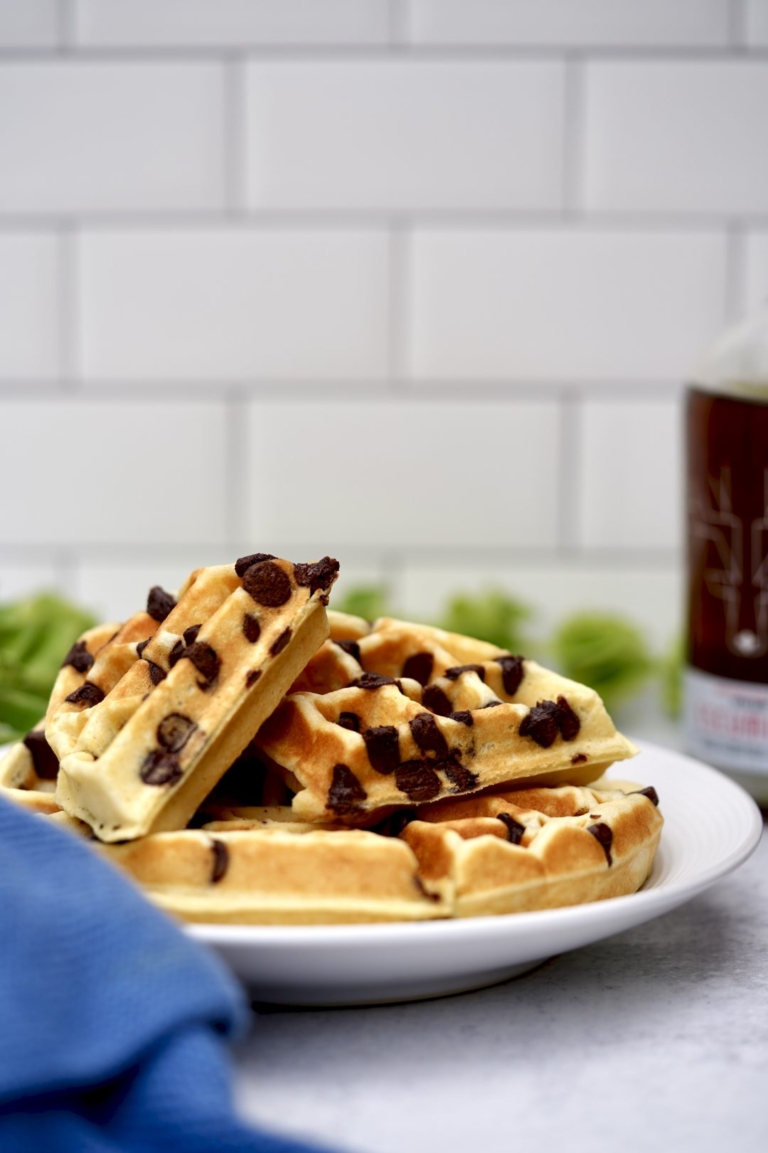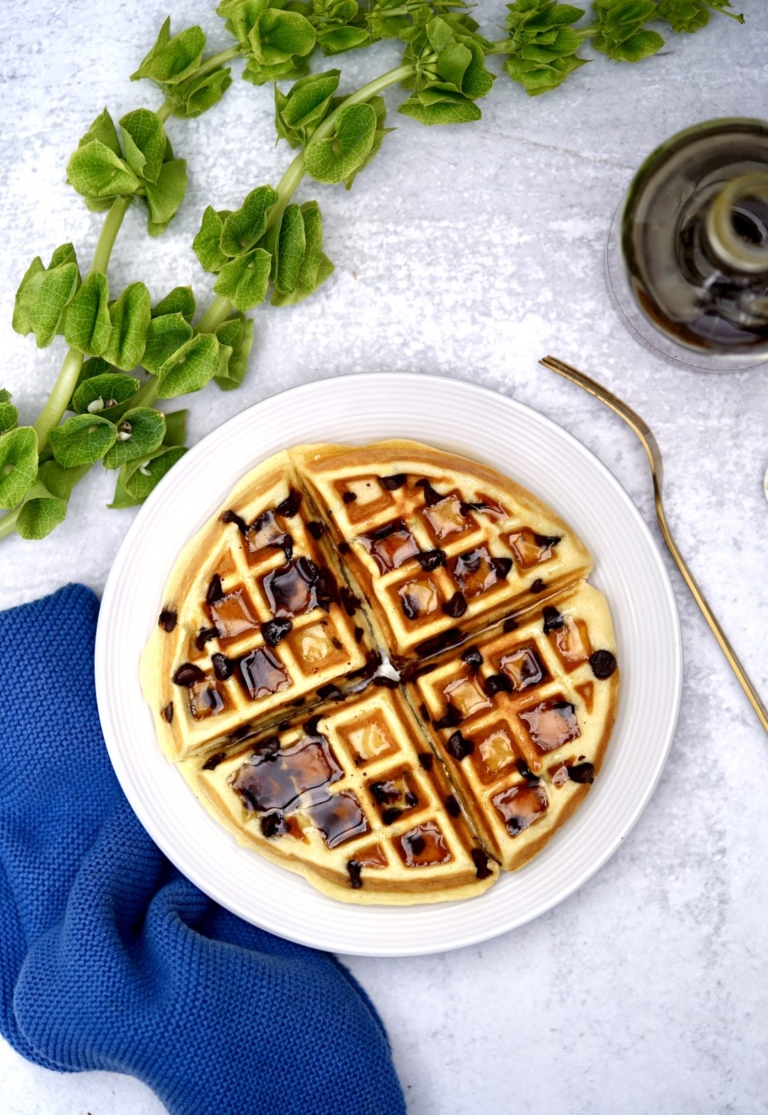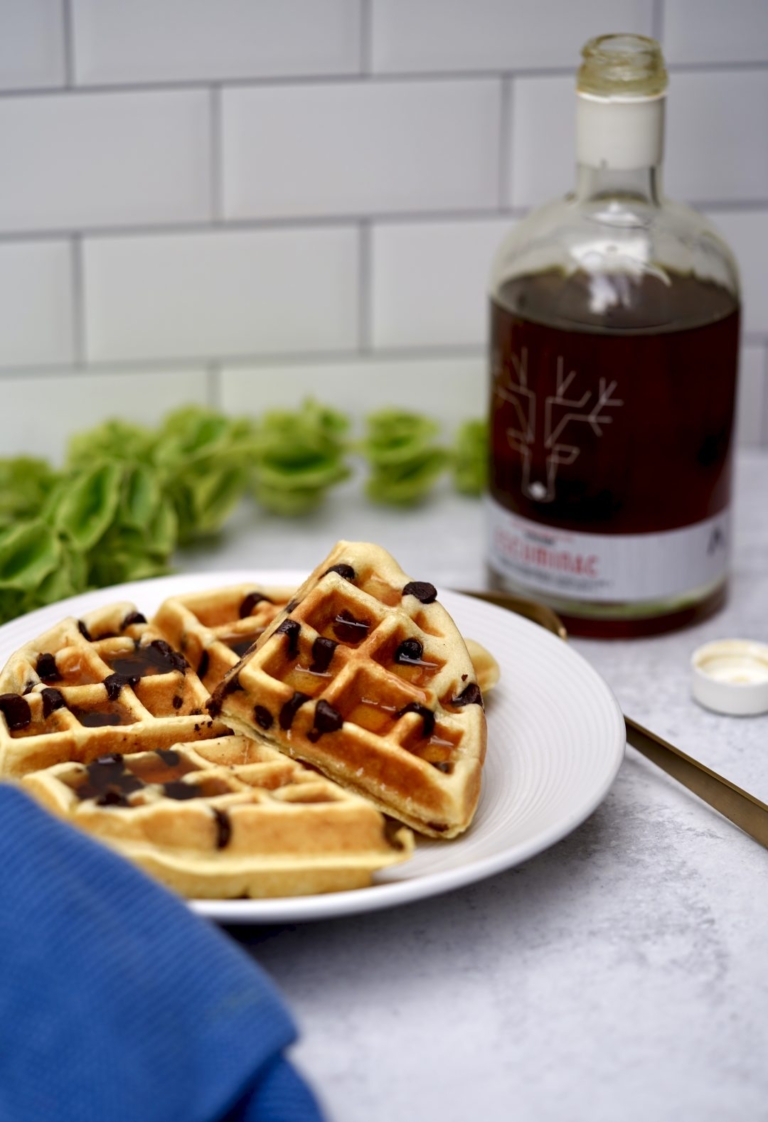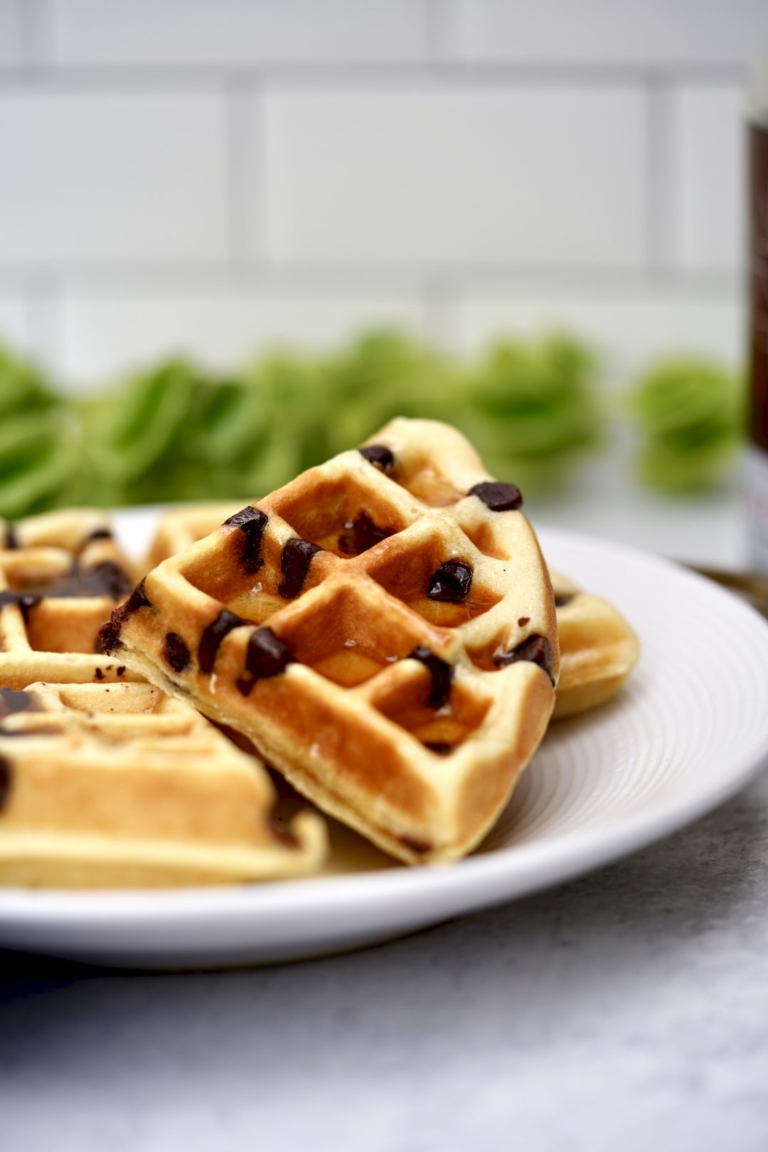Mochi Chocolate Chip Waffles
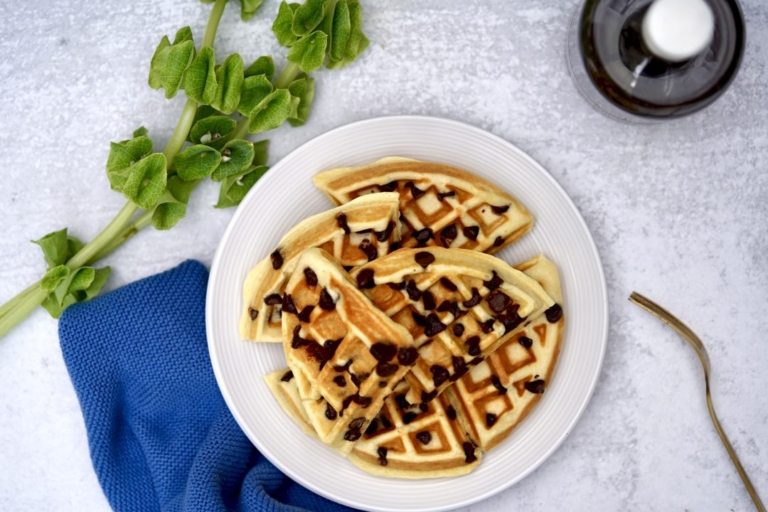
Swoon-worthy chocolate chip mochi waffles, as if breakfast couldn’t get any better. The main ingredient in these waffles is a sweet rice flour known as Mochiko, and this is what creates the amazing chewy texture mochi is known for. The other ingredients used in this waffle batter are similar to other standard waffle recipes such as; flour, eggs, milk, sugar, and vanilla. If you’ve never had a mochi waffle before, mochi waffles have a really interesting chewy texture on the inside with a crispy outside which makes the perfect balance if you ask me.
Perhaps you have heard the clever term “moffles” used for describing mochi + waffles. But my recipe is not technically a muffle recipe. Moffles, by comparison, are typically made by cutting pre-made mochi paste into cubes and then pressing it into a hot waffle iron. My mochi recipe uses sweet rice mochi flour to make a modern version of an American-style waffle.
What is Mochi Flour?
Mochiko is a sweet rice flour that you can purchase at Asian markets as well as online at Amazon. Mochiko is a fine rice flour that made from mochigome, a glutinous short-grain Japanese rice. Also known as Gyuhiko or Daifukuko, this fine flour is known for the sticky and chewy texture it can create. This special gluten-free flour is used to make not only ice cream mochi, but many Japanese pastries and desserts.
Waffles in History
I think about food often, and with that, their history. So when I’m developing a recipe or writing about it, research goes right along with it. Waffles have been around for a long time. Culinary historians believe waffles can be traced back to ancient Greece, where chefs made roasted flat cakes between metal plates attached to long wooden handles. The Greeks called these cakes obvious, and they weren’t as sweet as modern waffles. Similar unleavened wafers called oublies were made by the Catholic Church out of grain flour and water in Medieval Europe many years later.
Eventually, other ingredients, such as spices, cream, honey, and sweet butter made their way into the public batter. Leavening agents added made the wafers both thicker and doughier. The thicker wafer soon became known as the wafer. Around the 15th century, Dutch wafel makers began forging rectangular plates with a grid pattern. Although no one knows for sure, experts believe the waffle grid pattern we know today came about naturally as a way to cook less batter over a greater surface area.
The Dutch brought waffles, as we know them, to America. But it took a while before waffle irons were considered a common appliance in American households. The first patent issued for a waffle iron went to Cornelius Swartwout of Troy, New York, in 1869. In the 1950’s Frank Dorsa brought Eggo waffles (originally known as “froffles”) to the market, and frozen (toasted) waffles, (along with the tagline “leggo my eggo”) changed the morning of Americans.
The crispy exterior of these homemade mochi waffles yields a delightfully bouncy, and slightly chewy, inside reminiscent of the traditional ice cream mochi we all know and love. Like traditional waffles, mochi waffles are best when enjoyed right away for that optimal crispy-chewy factor. Be mindful, that they will soften over time (and over-cooked mochi waffles will harden further with time). Softened mochi waffles can be toasted in the oven to bring back some of that fresh crispiness.
Mochi Chocolate Chip Waffles
Ingredients:
- 2 1/2 cups Mochiko flour
- 1/2 cup flour
- 3 teaspoons baking powder
- 1/4 teaspoon salt
- 1 1/2 cups whole milk
- 2 eggs, lightly beaten
- 1 teaspoon vanilla extract
- 3/4 cup semi-sweet chocolate chips
Directions:
- In a small bowl add the flour, sugar, baking powder, and salt, and mix well to blend.
- Add the milk, egg, and vanilla extract and whisk to combine. Fold in the chocolate chips. Use waffle batter on a well-oiled waffle maker per usual.

